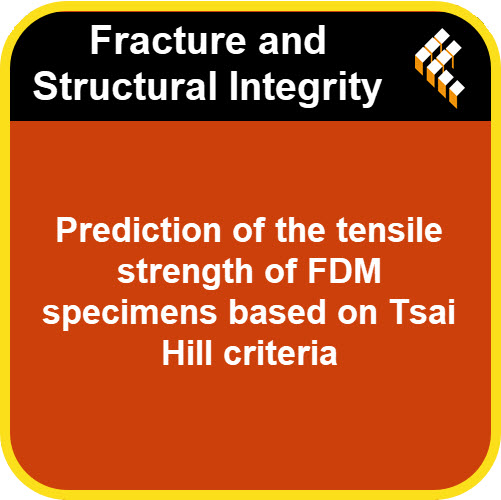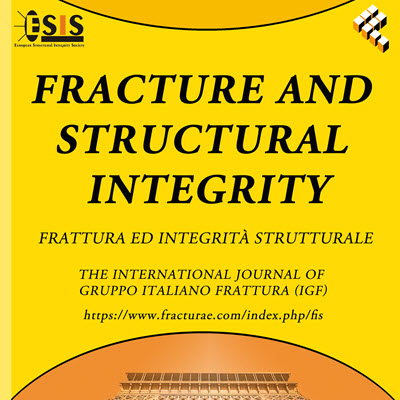Fracture and Structural Integrity: The Podcast
Stay at the cutting edge of fracture mechanics and structural integrity research with the official podcast of the Fracture and Structural Integrity journal. Join us for insightful interviews with top researchers, in-depth discussions of groundbreaking papers, and explorations of emerging trends in the field.
RSS Spotify YouTube Amazon Music
Prediction of the tensile strength of FDM specimens based on Tsai Hill criteria
2025-05-22
https://www.fracturae.com/index.php/fis/article/view/5416
This study investigates the mechanical behavior of 3D-printed polyethylene terephthalate glycol (PETG) polymer specimens subjected to tensile and shear testing, with a particular focus on the influence of raster orientation and shell contour. Specimens were fabricated using Fused Deposition Modeling (FDM) at three raster angles (0°, 45°, and 90°) and tested using both a mechanical extensometer and a Digital Image Correlation (DIC) system. The results indicate a significant influence of raster orientation on tensile and shear properties. 0° specimens exhibited the highest tensile strength, as the filament alignment was parallel to the loading direction. In contrast, 45° specimens demonstrated more ductile behavior. While the shell contour had minimal effect on 0° and 45° specimens, it enhanced stiffness and ductility in 90° specimens. Furthermore, the Tsai-Hill criterion was applied to predict the tensile strength at a 45° orientation. These findings contribute to a deeper understanding of the anisotropic behavior of 3D-printed materials and highlight the importance of raster orientation in optimizing mechanical performance.
DownloadFiletype: MP3 - Size: 21 MB - Duration: 18:02m (160 kbps 24000 Hz)
Powered by Podcast Generator, an open source podcast publishing solution | Theme based on Bootstrap
